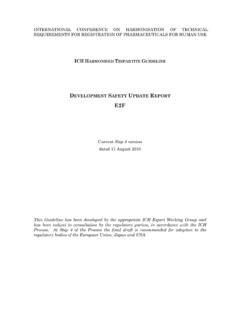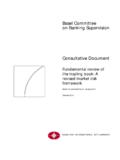Transcription of Final Concept Paper ICH Q14: Analytical Procedure ...
1 International Council for Harmonisation of Technical Requirements for Pharmaceuticals for Human Use ICH Secretariat, Route Pr -Bois 20, Box 1894, 1215 Geneva, Switzerland Telephone: +41 (22) 710 7480 - Final Concept Paper ICH Q14: Analytical Procedure development and Revision of Q2(R1) Analytical Validation dated 14 November 2018 Endorsed by the Management Committee on 15 November 2018 Type of Harmonisation Action proposed It is proposed to develop a new quality guideline on Analytical Procedure development and to revise the ICH Q2(R1) Guideline on Validation of Analytical procedures : Text and Methodology. The Expert Working Group should potentially determine the feasibility to combine both documents into one for simplification and clarity. Q14 Analytical Procedure development guideline The new guideline is proposed for harmonising the scientific approaches of Analytical Procedure development , and providing the principles relating to the description of Analytical Procedure development process.
2 Applying this guideline will improve regulatory communication between industry and regulators and facilitate more efficient, sound scientific and risk-based approval as well as post-approval change management of Analytical procedures . Q2(R1) Revision The scope of the revision will include validation principles that cover Analytical use of spectroscopic or spectrometry data ( , NIR, Raman, NMR or MS) some of which often require multivariate statistical analyses. The guideline will continue to provide a general framework for the principles of Analytical Procedure validation applicable to products mostly in the scope of Q6A and Q6B. These proposed guidelines (Q2 and Q14) are intended to complement with ICH Q8 to Q12 Guidelines, as well as on-going ICH Q13 for Continuous Manufacturing.
3 Statement of the Perceived Problem Q14 Analytical Procedure development guideline Since there is no ICH guideline on Analytical Procedure development , applicants often report Analytical validation results alone and rarely present performance evaluation with Analytical development outcomes. This makes regulatory communication ineffective especially when non-conventional (for example, real time release testing) Analytical procedures are employed. Additionally, the lack of guidelines precludes the applicant from an opportunity to present scientific basis for flexible regulatory approaches to post-approval Analytical Procedure changes. Q2(R1) Revision The current Q2(R1) Guideline on Validation of Analytical procedures : Text and Methodology does not cover more recent application of Analytical procedures , ( , Near Final Q2(R2)/Q14 Concept Paper Endorsed: 15 November 2018 -2- Infrared (NIR) Spectroscopy or Raman Spectroscopy).
4 The lack of guidance for these Analytical data sets can lead to submissions with inadequate validation data for such Analytical procedures , resulting in recursive information requests and responses, which can delay application approval. This is particularly the case for procedures reliant on multivariate models, a category for which no ICH validation guideline exists. Spectroscopy tools like NIR or Raman are commonly used in process control and real time testing of pharmaceutical products using multivariate analysis methods. Taking into consideration a difference between multivariate and traditional methods, the current approach of Q2 (R1) is not sufficient to establish the suitability of multivariate methods. For example, when traditional methods use reference standards, analysed along with the unknown samples, the performance of these methods is confirmed and assured during each test.
5 By contrast, multivariate model-based methods often do not use reference standards during analysis. This makes robust development , validation and proper maintenance of such methods of utmost importance for reliable prediction throughout the method lifecycle. Issues to be Resolved Q14 Analytical Procedure development guideline Analytical procedures are necessary to develop products and manufacturing process, to measure critical quality attributes and to ensure the quality of Final products. These analytics would be modified or improved throughout the product lifecycle because of continual improvement activities. Thus, the new guideline will provide an opportunity to present the outcome of Analytical Procedure development in traditional approaches and in enhanced approaches and facilitate efficient and science-based change management by improving communication between industry and regulators.
6 Some of main technical and scientific elements, which require harmonization, include: - Submission of Analytical Procedure development and related information in CTD format - The Concept and strategy of enhanced approaches for Analytical procedures - Performance criteria of Analytical procedures . - In line with ICH Q8 and ICH Q11, greater understanding of Analytical Procedure can create the basis for more efficient, sound science and risked-based change management ( , using Analytical Quality by Design principles). - Key elements and terminology - Demonstration of suitability for Real Time Release testing. Q2(R1) Revision In addition to the current guideline, the revised guideline will define the common validation characteristics for procedures , like NIR, nuclear magnetic resonance spectroscopy (NMR), and hyphenated techniques, for example CE-MS, CE-ICP-MS, LC-NMR, GC-MS, LC-MS.
7 Although these techniques utilize very different instrumentation, the data output is an intensity across a frequency range or mass to charge ratio range. When necessary, the data analysis can be simplified via appropriate use of multivariate statistical analyses to compare measurements between test and reference samples. procedures reliant on multivariate methods below will be also addressed: - Definition of validation characteristics applicable to multivariate methods which may differ with the area of application ( , identification vs. quantitation, batch vs. continuous process, dosage form assay vs. blending monitoring) - Important method parameters ( , the number of latent variables) established during method development - Robustness which is well understood, however does not have a quantitative measure Final Q2(R2)/Q14 Concept Paper Endorsed: 15 November 2018 -3- - Inclusion of post-approval verification and maintenance considerations as a part of the validation - Requirements for validation data sets Background to the Proposal The new Analytical Procedure development guideline (Q14) will be for S4, P4 and P5 of CTD and will complement with Q8(R2) and Q11.
8 The objective of this proposal is to provide an opportunity to present the knowledge obtained through applying the enhanced approaches to Analytical procedures . The proposed guideline will facilitate selecting or identifying development approaches that will streamline post-approval changes to procedures and enable more efficient, sound science- and risk-based change management. Applying the enhanced approach for Analytical procedures can contribute to the resource-efficient drug development and post-approval CMC changes. The revised Q2(R1) guideline will be for S4, P4 and P5 of CTD with emphasis on systematic Analytical development . The expected outcome would be an expanded Q2 that would specifically address validation of some of the newer Analytical procedures , and include a discussion of statistical aspects in validation.
9 The revision of Q2(R1) will include validation approaches for Analytical method based on instrumentation that provides spectra across a frequency range ( , Raman, NIR or NMR) or across a mass to charge range ( , mass spectrometry). The revision will also include presentation of appropriate multivariate statistical methods with consideration of sample size and ongoing method performance verification. As Analytical development activities are followed by Analytical Validation activities, the two tasks above will be conducted in an orchestrated manner by one EWG. Two separate documents will be produced. Type of Expert Working Group and Resources Because activities are strongly interrelated, one Expert Working Group will be designated to establish the new Analytical Procedure development and revise ICH Q2(R1).
10 An Expert Working Group composed of experts with expertise in the area of Analytical chemistry and pharmaceutical control is needed. Timing It is proposed that this work is initiated in fall of 2018 following finalization of the Concept Paper and Business Plan and establishment of an Expert Working Group. By Fall 2018; Final Concept Paper , The first Face to Face EWG meeting Spring 2019; 2nd F2F EWG meeting Fall 2019; 3rd F2F EWG meeting (Finish two draft documents to be reviewed within Member/Observer parties for both). Spring 2020; 4th F2T EWG meeting (Step 2 for both) Spring 2021; 5th F2F EWG meeting (Step 4 for both)
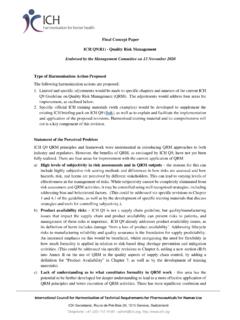
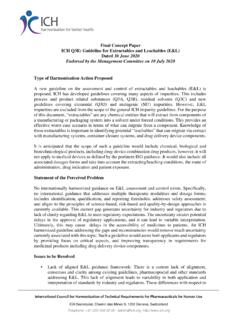
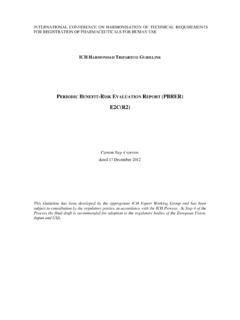
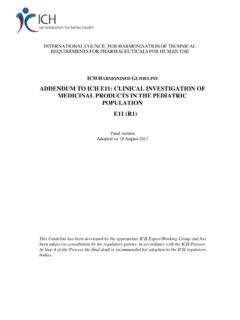
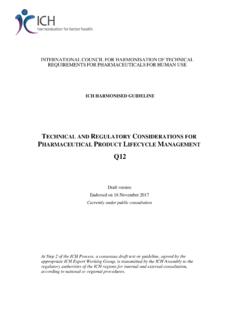
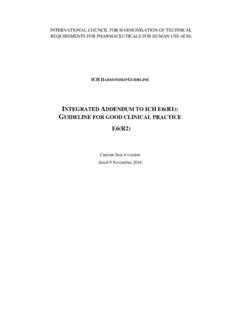
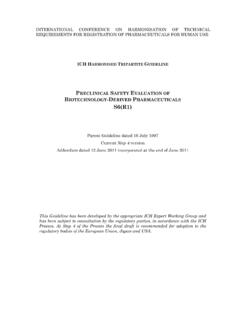
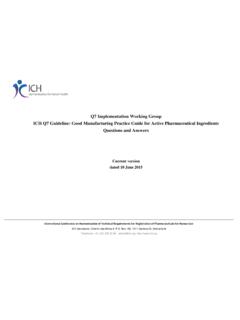
![[ICH E2F] [EXAMPLE DSUR – PHASE III INVESTIGATIONAL …](/cache/preview/e/7/a/2/e/6/3/0/thumb-e7a2e63043c4463724e748eb98faa3a7.jpg)
